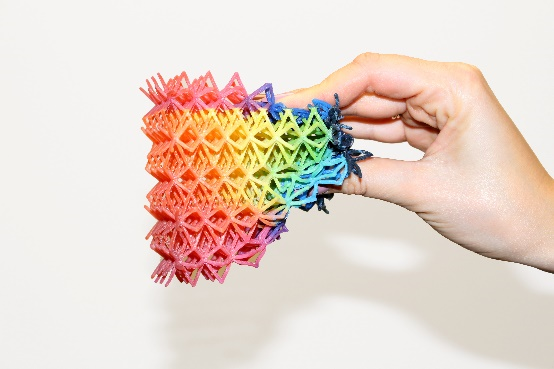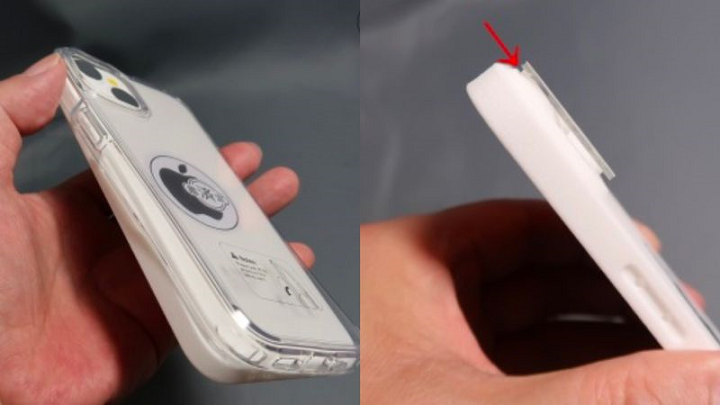In 3D Printing News Briefs today, we’re starting off with metal, as RIT and Xerox are partnering to advance metal AM with a new system installation. Moving on, Stratasys has introduced some colorful new materials for lifelike applications. Next, researchers from Germany have added anti-reflection coatings to 3D printed micro-optical systems, and a research team out of Brazil built a modified 3D printer to develop a millreactor for producing ethanol. Finally, 3D printed mockups offer a comparison between the iPhone 13 and 14.
RIT Installs Xerox ElemX 3D Printer to Advance Metal AM
Xerox (NYSE: XRX) Elem Additive Solutions announced a partnership with the Rochester Institute of Technology (RIT), which has purchased and installed one of its ElemX metal 3D printers at the RIT AMPrint Center. This installation will help facilitate advanced material research, specifically focused on aerospace applications, as RIT collaborates with manufacturers’ research and product development in next-generation metal AM. RIT is an early adopter of liquid metal AM, which the ElemX offers, and will continue working with Xerox, one of its longtime collaborators, to scale the ElemX system for new industrial and commercial applications.
“RIT has already been a great partner in helping to advance our liquid metal AM technology and we believe the installation of the ElemX at the AM Print Center will be important to further refine our solution. Partnering with advanced research facilities like RIT that collaborate with manufacturers will be key to scaling up the adoption of our technology within the industry,” said Tali Rosman, the GM of Xerox Elem Additive.
Stratasys Introduces Color Resins for Hyper-Realistic 3D Prints
Recently, Stratasys introduced three new color resins for its J7 and J7 PolyJet 3D printer series, which are said to achieve soft-touch, full-color prints with an unprecedented level of realism. The new Agilus30 color resins, in Cyan, Magenta, and Yellow, are immediately available to use with the high-speed, multimaterial J7 and J8 printers. This will enable designers to create and print full-color prototypes that meet their specific business needs and have the look and feel of the final product, which isn’t always the easiest feat to achieve.
“With using these new materials our customers can achieve a superior level of design realism – from color to texture to flexibility, further extending their 3D printing capabilities and allowing them to design without limits. We have seen amazing prints from our customers; models so realistic that it is hard to differentiate between those that were 3D printed to those that were real,” indicated Shamir Shoham, Vice President of Design for Stratasys. “These new materials open up countless possibilities, especially with our customers in the entertainment and consumer goods industries.”
Anti-reflection Coating Added to 3D Printed Micro-Optical Systems
 Researchers developed a new way to apply anti-reflective coatings to 3D printed multi-lens systems, such as the doublet objective pictured here, which is just 600 microns in diameter. These coatings help minimize light losses due to reflection, which is critical for making high-quality 3D printed systems with multiple microlenses. Image courtesy of Simon Ristok, University of Stuttgart
Researchers developed a new way to apply anti-reflective coatings to 3D printed multi-lens systems, such as the doublet objective pictured here, which is just 600 microns in diameter. These coatings help minimize light losses due to reflection, which is critical for making high-quality 3D printed systems with multiple microlenses. Image courtesy of Simon Ristok, University of StuttgartA research team from the University of Stuttgart published a paper detailing their new low-temperature thermal atomic layer deposition (ALD) method for applying anti-reflective (AR) coatings to small, complex 3D printed polymer multi-lens systems. Coatings help reduce light loss due to reflection, and large camera lenses are coated pre-assembly. But, for small lenses 3D printed in a single step, traditional coating methods won’t work. ALD was previously used to apply AR coatings, but the process typically means high temperatures that would melt the materials used to print complex micro-optical systems. So the team developed a new process that works at a lower 150°C and exposes the 3D printed lens system to a gas containing the molecular building blocks of the AR coating. The gas molecules can then move freely into all structure parts to form a thin, homogenous layer on all exposed surfaces. The team successfully tested the process on a double-lens system printed on a Nanoscribe Quantum X.
“We applied ALD to the fabrication of antireflection coatings for 3D printed complex micro-optics for the first time. This approach could be used to make new kinds of extremely thin endoscopic devices that might enable novel ways of diagnosing—and perhaps even treating—disease. It could also be used to make miniature sensor systems for autonomous vehicles or high-quality miniature optics for augmented/virtual reality devices such as goggles,” explained Simon Ristok, first author of the paper.
“To print the double-lens system, we used a Nanoscribe Quantum X microfabrication system that enables unprecedented surface smoothness for 3D printed lenses. We showed that our ALD coatings significantly reduced reflectivity and, conversely, enhanced transmission for this multi-lens system.”
3D Printed Millireactor for Alcoholic Fermentation Process
Researchers from the University of Campinas (Unicamp) in Brazil published a paper on the modified 3D bioprinter they developed to print a millireactor with yeast-filled channels immobilized in alginate hydrogel for fermenting alcohol in a single stage. The autonomous robotic system features two independent extruders, a conventional head with an FFF mechanism and a module with a syringe for injecting solutions and hydrogels with a catalyst to produce ethanol, a clean, renewable energy source. As co-author and research associate Harrson S. Santana wrote in an email, this enables the faster, safer, more efficient manufacturing of catalytic microdevices.
“We have demonstrated that our equipment and methodology are an advantageous alternative for application in the fermentation process and that the one-step manufacturing of the reaction device makes the process faster and more practical, with the possibility of testing different operating conditions and designs. Therefore, we developed the code for a microreactor with a biotint deposit to be used and applied in different bioprocesses by engineers and researchers anywhere in the world. The program manufactures in an automated way, and in a single step, a microdevice with immobilized cells that can be used for bioprocesses,” the researchers concluded.
3D Printed iPhone 13 vs. 14 Mockups
Finally, if you’re an iPhone user like me, you’re likely curious about the design changes coming for this year’s iPhone 14 lineup of four models, and now you can! In a blog post, you can see images of 3D printed iPhone 14 mockups, likely based on somewhat accurate dimensions for the new phone. However, these mockups do not include the layout of the front camera and the iPhone 14 Pro sensors, so we can’t confirm what the front looks like.
One big design change you may have heard about is the larger camera system on the back. In one image, you can see the 6.7″ iPhone 14 Max mockup fitting almost perfectly inside a case for the iPhone 13 Pro Max, which means they’re probably the same size, and the camera bump may be much smaller on the new phone. However, the 6.1″ iPhone 14 and 14 Pro mockups don’t fit into the corresponding cases for the 13 models, meaning that the camera bump is larger. The 3D printed mockups also suggest that some of the 14 models may have thinner display bezels, with different corner radii, based on the fit of screen protectors.
Subscribe to Our Email Newsletter
Stay up-to-date on all the latest news from the 3D printing industry and receive information and offers from third party vendors.
You May Also Like
Profiling a Construction 3D Printing Pioneer: US Army Corps of Engineers’ Megan Kreiger
The world of construction 3D printing is still so new that the true experts can probably be counted on two hands. Among them is Megan Kreiger, Portfolio Manager of Additive...
US Army Corps of Engineers Taps Lincoln Electric & Eaton for Largest 3D Printed US Civil Works Part
The Soo Locks sit on the US-Canadian border, enabling maritime travel between Lake Superior and Lake Huron, from which ships can reach the rest of the Great Lakes. Crafts carrying...
Construction 3D Printing CEO Reflects on Being Female in Construction
Natalie Wadley, CEO of ChangeMaker3D, could hear the words of her daughter sitting next to her resounding in her head. “Mum, MUM, you’ve won!” Wadley had just won the prestigious...
1Print to Commercialize 3D Printed Coastal Resilience Solutions
1Print, a company that specializes in deploying additive construction (AC) for infrastructure projects, has entered an agreement with the University of Miami (UM) to accelerate commercialization of the SEAHIVE shoreline...

































